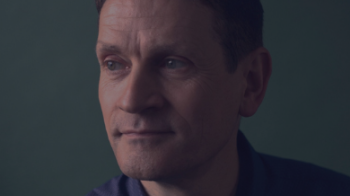Christine Armstrong: “This is a moment to reset how we work”
Christine Armstrong - Communications and management expert
As part of IAB UK’s Leadership Series, communications and management expert Christine Armstrong shared how the pandemic is permanently reshaping our working lives and what businesses need to consider as we reset the 9 to 5
“Today is a deep dive into the future of work,” said our CMO James Chandler as he introduced our second Leadership Series speaker of 2021 - Christine Armstrong, vlogger, researcher, author, columnist and management expert.
In the following hour, Armstrong shared an honest and expert view of how we’ve coped with the past year and the key factors business leaders need to consider as we navigate a return to the office (or not). In short, as James put it, “all the big lessons from lockdown and what we should take into the future of work.” Here are some of our key learnings...
Take some time to compute
We have been through “huge structural and psychological change” since the start of the pandemic and it’s worth taking some time to compute the scale of what we have experienced, advises Armstrong. From the seismic shifts in how we work, to how we have got used to hearing huge daily death counts, the pandemic has likely seen us all pinball from a state of ‘heroic frenzy’ to a ‘disillusioned slump’.
In terms of our working lives, boundaries have disintegrated as estimates suggest people are working 48 minutes more, on average, a day. But as Armstrong explained, “productivity and efficiency are not the same thing”. We may be working longer hours, but many of us don’t feel like we have achieved much at the end of each day. At the same time, we have lost the nuances of office life and have seen a rise in paranoia and anxiety: “We get a lot of reassurance from being in a physical space with people… we no longer get that read of the room.”
Many working from home will miss the energy of being with a team, as well as all the “small relationships that tie us into a place”. Yet leaders also have to acknowledge that there is a huge polarisation of experience and a lot of people will have enjoyed the shift to home working. As we start to think about how businesses will function in the future, it’s clear there is no ‘one size fits all’ solution for workforces.
Tools to try while WFH
From maintaining energy levels to improving communication, there are tools and practices that can help manage productivity while working from home. Armstrong advises trying an energy tracker, noting down how factors - such as exercise, relaxation, sleep, alcohol, friends, partners and nature - impact your energy levels on a daily basis. “Patterns emerge and you’ll notice how very small changes will change your energy levels.”
When it comes to communication, we’re all struggling with an “onslaught” as Armstrong put it. The solution? “Step back and take control of your communications” in a thoughtful and considered way. From instant messaging to your email policy and Zoom meetings, speak to your teams and agree boundaries. “Don’t do what senior men often do, where they turn everything off for a day and no one can reach them”, but think about how you work, how your team works and have an open conversation about current practices.
“You have got to take control of your time,” Armstrong explained. “People respect people in offices who have boundaries.” Her advice to deal with the barrage of meetings? Write out the goals that you want to achieve and then go through your diary. Strike any meetings you have attended in the past few weeks that don’t feed into your goals and don’t attend them in future. As one delegate snappily put it: “No agenda, no attenda.”
Navigating hybrid working
39% of people want to work from home some of the time, 39% of people want to return to the office full time and 20% never want to see the office again, reveals a YouGov poll. While working from home has had its challenges, it has at least been pretty clear-cut. What comes next is more complex. As hybrid-working becomes a reality, business leaders are “going to have to really think about the design of this” in order to avoid a two-tier system where those that are physically present get the work and the opportunities, while those still working from home are left behind.
Armstrong also covered how the pandemic is impacting women and entrenching pre-pandemic inequality: “The fall out for women is terrifying.” They are more likely to be the sole bearer of childcare duties (households where women are the sole child carer have jumped from 25% to 50%), women are more likely to be pushed out of the workforce and are vastly overrepresented in the hardest-hit industries. As we prepare to shift to a more hybrid way of working, businesses need to keep this front of mind, acknowledge that women are more likely to work from home, and develop systems that “keep an equal sense of value when people are in different places”.
Ultimately, the future of work will be experimental. “We will need to work it out and it will be messy and we will make mistakes,” Armstrong said, whether we see the rise of a Mad Men-esq return to statement offices, or a more fluid set up where we balance home and office working. While there is no clear roadmap, what we do have is an opportunity to reset how we work: “This is a moment to change, reset and rethink it. It’s ours for the taking, but we have to make some decisions.”
Our next Leadership Series speaker will be Shazia Ginai, CEO of Neuro-Insight, discussing how COVID-19 has rewired our brains. Join us on Thursday 18 March.
Related content
Bruce Daisley: Creating a sense of ‘togetherness’ is critical
Learn moreMartin Siegert on climate change: “Advertising is really critical for our future”
Learn moreNigel Owens: The biggest challenge of my life was accepting myself
Learn moreRuth Davidson: “The most important resource in any organisation is people”
Learn more
Fast forward to 2030 with Futurescape
An in-depth exploration of the attitudes, innovations and media shifts that will shape the years ahead and redefine how we advertise by the turn of the decade



